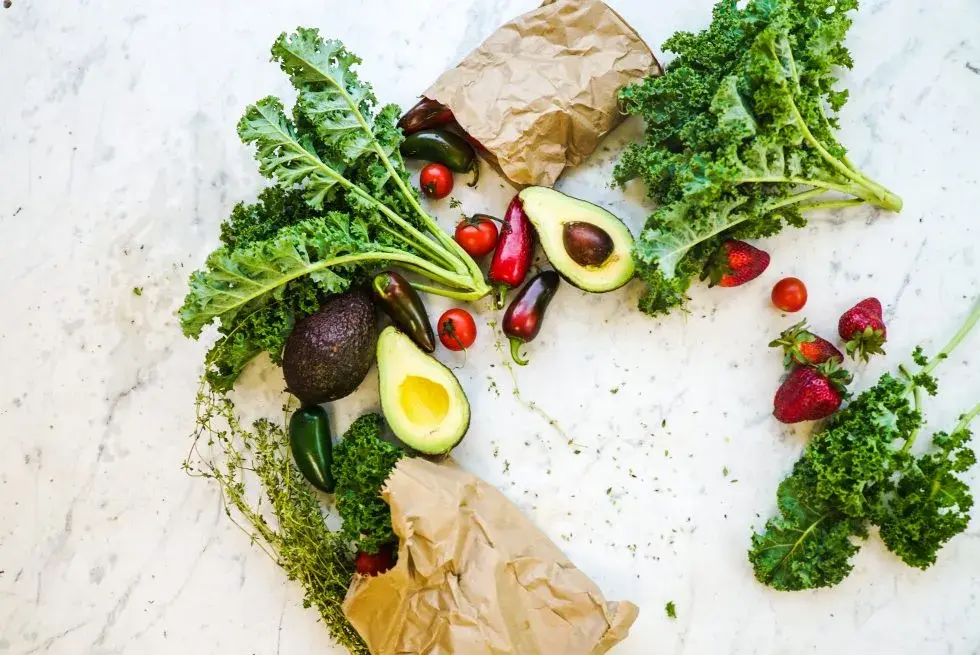The Best Foods to Eat for Irritable Bowel Syndrome Relief
Irritable Bowel Syndrome (IBS) affects up to 10-15% of people in the US alone, causing unpredictable gut chaos like bloating, cramps, diarrhea, or constipation. If you're tired of guessing what to eat, you're not alone. Diet is one of the most powerful tools for managing symptoms and reclaiming "food freedom."
In this guide, we'll break down evidence-based strategies, focusing on the low FODMAP diet, which has helped IBS sufferers reduce symptoms.
These ideas will make your meals both delicious and pleasant for your gut, whether you are new to irritable bowel syndrome or refining your routine.
What Is IBS, and Why Does Diet Matter in 2026?
IBS is a functional gastrointestinal disorder centered in the large intestine, where heightened gut sensitivity leads to irregular motility and discomfort without visible inflammation.
Symptoms vary widely. Some endure diarrhea-predominant IBS (IBS-D) with urgent, loose stools. Others face constipation-dominant IBS (IBS-C) with painful, infrequent bowel movements. Many alternate between the two (IBS-M), compounded by bloating, cramping, and mucus in stools.
Various factors contribute to IBS, such as altered gut microbiota, visceral hypersensitivity, and post-infectious changes, but food plays a significant role, with up to 60% of flare-ups directly linked to diet.
Why prioritize diet now? Research has affirmed the efficacy of the low FODMAP protocol, which reduces overall symptom severity in meta-analyses. It's not just a trend but a science-backed lifeline. This three-phase diet (elimination, reintroduction, and personalization) identifies triggers like fructans and polyols, fostering a balanced microbiome.
Pair it with a food-symptom journal, and you'll tailor relief that lasts, potentially cutting doctor visits by half. Remember, IBS severity ranges from mild (manageable disruptions) to severe (57% of cases per recent scoring systems), so starting small yields big wins.
Foods to Eat: Nourish Your Gut for Lasting IBS Relief
Low FODMAP diets improve gut health by reducing fermentation while providing soluble fiber, prebiotics, and hydration. Aim for variety to get 25-30 g of fiber each day, gradually increasing your fiber intake to avoid initial bloating.
These nutrient powerhouses not only manage the intestines but also address nutrient deficiencies typical in IBS, such as low vitamin D or B12 levels caused by irregular eating habits.
Low FODMAP Fruits: Sweet, Gentle Choices for Digestion
Fruits provide antioxidants and pectin, a soluble fiber that gels in the gut for easier transit, without overdosing on fructose.
Blueberries (high in anti-inflammatory chemicals), strawberries (high in vitamin C), kiwi (the actinidin enzyme assists protein breakdown), oranges, unripe bananas, cantaloupe, grapefruit, lemons, limes, papaya, and passion fruit should all be consumed in quantities of 1/2 cup.
According to studies, eating kiwis daily helps with constipation in IBS-C by improving motility.
Low FODMAP Vegetables: Fiber-Rich Veggies That Soothe
When picked correctly, vegetables provide bulk without gas while also fostering a diverse microbiome that is necessary for IBS control.
Carrots (beta-carotene for gut lining health), cucumbers (hydrating crunch), bell peppers (moderate capsaicin for anti-spasm benefits), spinach (magnesium relaxes muscles), zucchini, green beans, and potatoes (skin on for additional fiber) are also options.
To improve digestibility, steam or roast zucchini noodles, which are a guilt-free alternative to spaghetti.
Grains and Proteins: Steady Energy Without the Bloat
Wheat and other gluten-free grains help keep blood sugar and bowel rhythm stable, while lean proteins help heal cells damaged by inflammation.
When you eat, choose oats (beta-glucans are good for you), quinoa (a full protein with quinoa amino acids), brown rice, and gluten-free bread. Proteins from foods like grilled chicken (tryptophan helps the brain and gut), baked salmon (omega-3s ease cramps), eggs (choline helps nerves work), tofu, and hard cheddar cheese make meals filling.
Two servings of 4 ounces of salmon a week cut inflammation markers by 20%.
Probiotic-Rich Foods: Restore Balance with Beneficial Bacteria
Probiotics use live cultures to drown out infections, and a 2025 meta-analysis of 15 RCTs found that they improved IBS symptoms, bloating, and discomfort in 1,793 individuals.
Eight recent trials demonstrate that multi-strain formulations outperform placebos, while synbiotics (pre+pro) and butyrate provide four weeks of relief.
Start with lactose-free yogurt or kefir (Bifidobacterium strains shine) and sauerkraut (if fermented without garlic). A daily 1/2 cup of yogurt reduces the persistence of symptoms by up to 50%.
Healthy Fats and Hydration Essentials: Lubricate for Smooth Sailing
Choose anti-inflammatory fats, such as olive oil (polyphenols protect mucosa) and little nut butter scoops (vitamin E antioxidant).
Hydrate with 8-10 glasses of water or herbal teas (peppermint relieves spasms), as dehydration exacerbates constipation in 40% of IBS cases.
Foods to Avoid: Sidestep These to Prevent Flare-Ups
High FODMAPs draw water into the gut and ferment rapidly, amplifying symptoms in sensitive folks.
The elimination phase (2-6 weeks) clears 75% of triggers; reintroduce systematically. Processed culprits add irritants like emulsifiers.
High FODMAP Fruits and Vegetables: Skip the Gas-Producers
These beauties pack fructose or fructans: apples, pears, mangos, watermelon, onions, garlic, broccoli heads, cauliflower, and artichokes. Even in small bites, they spike bloating—onions alone ferment to produce 30% more gas. Swap for low-FODMAP kin to maintain flavor.
Dairy Products: Choose Lactose-Free or Bust
Lactose intolerance overlaps with 65% of IBS, turning milk into a cramp factory. Steer clear of regular milk, soft cheeses, and ice cream, as they can also conceal themselves in creamy sauces. Lactose-free alternatives maintain calcium levels without causing discomfort.
Grains and Legumes: Ditch the Wheat and Beans
Wheat's fructans and legumes' galacto-oligosaccharides ferment fiercely: bread, pasta, beans, and lentils (unless tiny, soaked portions). Gluten sensitivity affects 30%—test elimination for clarity.
Other Common Triggers: From Sweets to Sips
Fried foods (fats delay emptying), carbonated drinks (CO2 bubbles), artificial sweeteners (sorbitol pulls water), spicy dishes, caffeine, and alcohol inflame the lining. Label-scan: high-fructose corn syrup hides in sodas, and agave in "health" bars.
Sample Daily IBS Meal Plan: A Low FODMAP Blueprint for Balanced Days
This 1,800-calorie plan emphasizes small, frequent eats to steady gut load, drawing from Monash-certified recipes. Prep tip: Batch-cook grains; total prep under 30 minutes daily.
Breakfast: Oatmeal Porridge with Strawberries and Chia—Energizing Start
Cook 1/2 cup oats in lactose-free milk, and top with five medium strawberries and 1 tbsp chia seeds. (350 cal; 8 g fiber, 10g protein) Why? Oats' soluble fiber bulks stools gently; strawberries add vitamin C sans fructose overload. Herbal tea chaser hydrates without caffeine jitters.
Mid-Morning Snack: Lactose-Free Yogurt with Blueberries—Probiotic Power-Up
1/2 cup lactose-free yogurt swirled with a handful of blueberries. (150 cal; 12g protein, probiotics) According to trials, it boosts Bifidobacteria, which helps reduce bloating. Keeps energy steady until lunch.
Lunch: Quinoa Salad with Grilled Chicken and Cucumber—Fresh and Filling
1/2 cup quinoa tossed with mixed greens, cucumber slices, 3 oz grilled chicken, and lemon-olive oil dressing. (450 cal; 25g protein, 6g fiber) Quinoa's low GI prevents spikes; cucumber hydrates for constipation ease.
Afternoon Snack: Carrot Sticks with Almond Butter—Crunchy Satiety
1 cup carrot sticks dipped in 1 tbsp almond butter. (200 cal; 4 g fiber, healthy fats) Carrots' beta-carotene soothes mucosa; fats curb hunger without grease.
Dinner: Baked Salmon with Zucchini and Brown Rice—Omega-Rich Wind-Down
4 oz baked salmon, steamed zucchini, and 1/2 cup brown rice. (500 cal; 30g protein, mega-3s) Salmon's fats reduce visceral pain; zucchini adds volume lightly.
Evening Snack (If Needed): Kiwi Slices—Light Digestion Closer
1 medium kiwi. (50 cal; 2 g fiber, vitamin K) This kiwi is packed with enzymes for overnight motility, making it ideal for individuals with IBS-C.
The Bottom Line
Are you prepared to improve your gut health? At Infinity Wellness, we uncover IBS root causes with natural, customized plans via virtual consults. Based in Waxahachie, TX, but offering nationwide services, schedule today for symptom-free strides!
FAQs About IBS
Q1. What is the low FODMAP diet for IBS?
A three-step elimination diet targeting fermentable carbs like fructans and lactose, it identifies triggers and restores tolerance. According to guidelines, the diet is effective for 70-80% of IBS patients and includes a strict phase lasting 2-6 weeks, followed by testing.
Q2. Can probiotics really help with IBS?
Absolutely, research across 53 RCTs shows probiotics (especially multi-strains) reduce abdominal pain, bloating, and overall persistence by modulating microbiota—synbiotics with butyrate offer rapid four-week gains.
Q3. How much water should I drink on an IBS diet?
Target 8-10 glasses (64-80 oz) to hydrate fiber and prevent constipation, a top IBS-C culprit. Infuse with cucumber or lemon for flavor; avoid fizzy or caffeinated drinks to dodge extra gas.
Q4. Is gluten-free necessary for IBS?
Not universally, but 30% benefit from wheat avoidance due to fructan overlap. Low FODMAP inherently limits it—trial for 2-4 weeks and reassess symptoms for clarity.
Q5. When should I see a doctor for IBS symptoms?
Immediately, blood in stool, weight loss, or unrelenting pain signal red flags. For persistent issues post-diet, pros diagnose via Rome IV criteria and exclude mimics like IBD.



